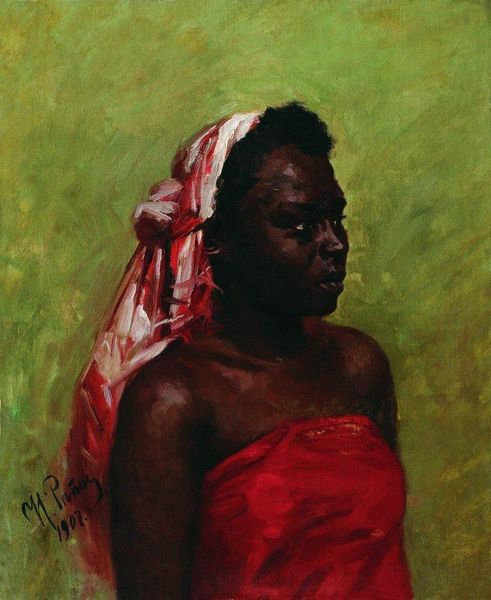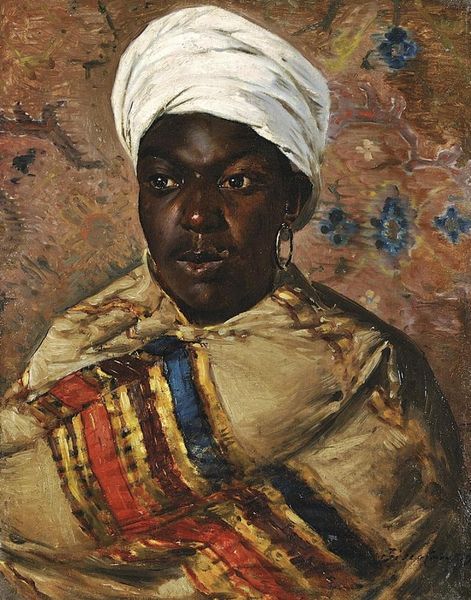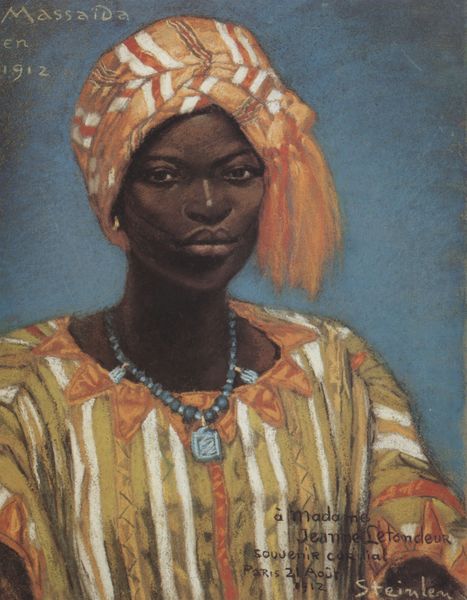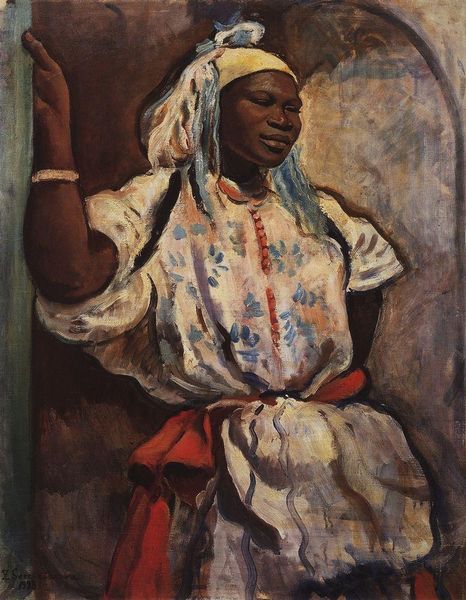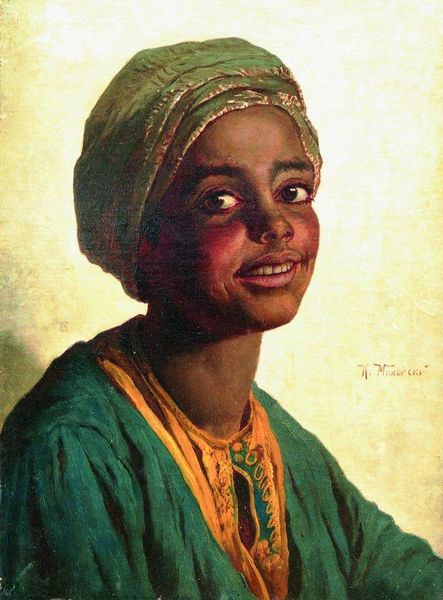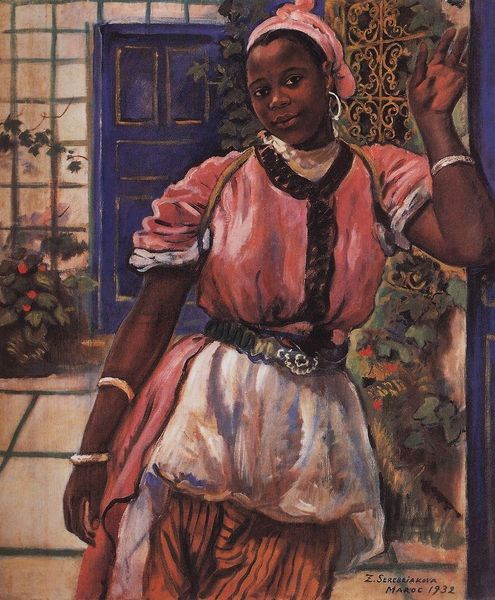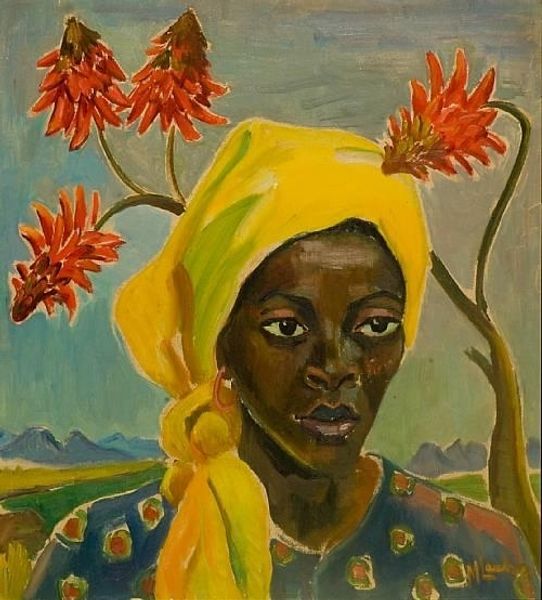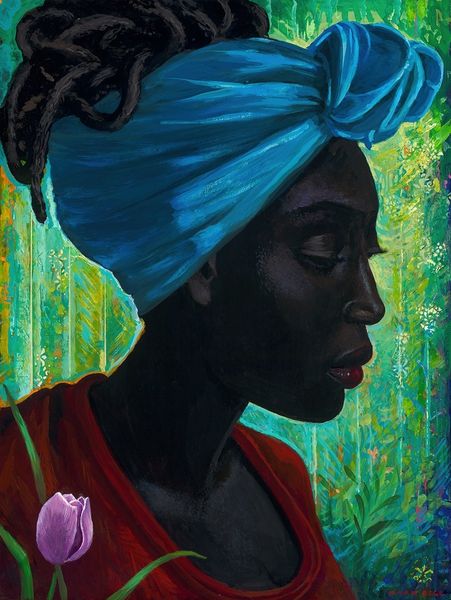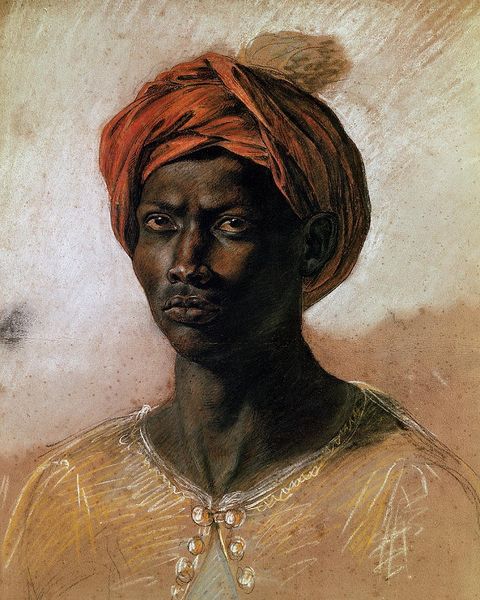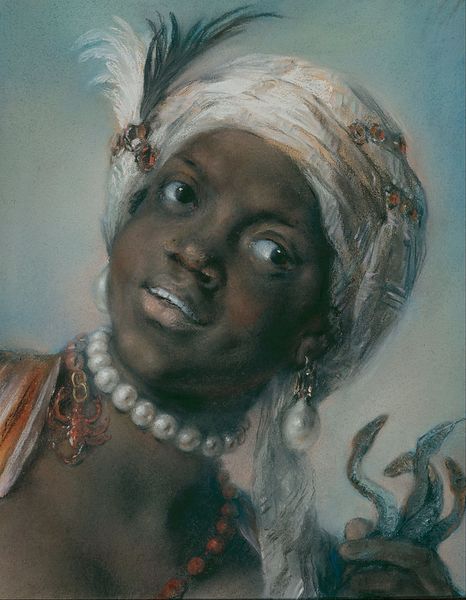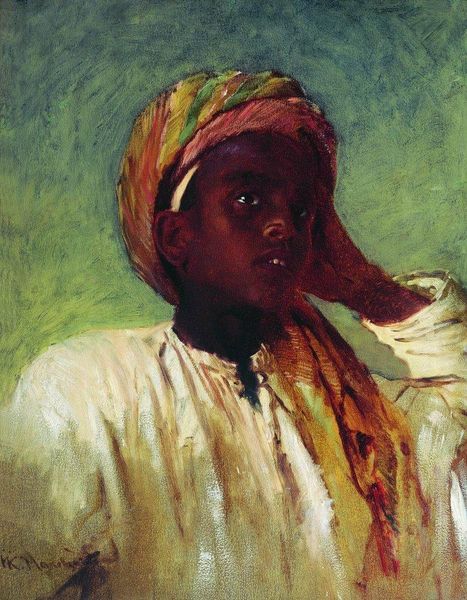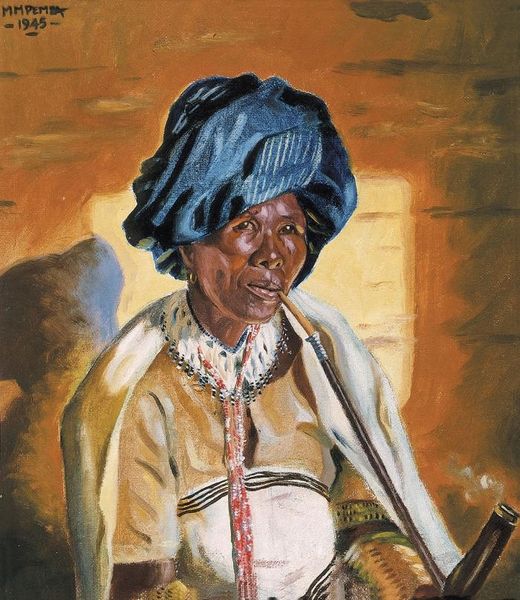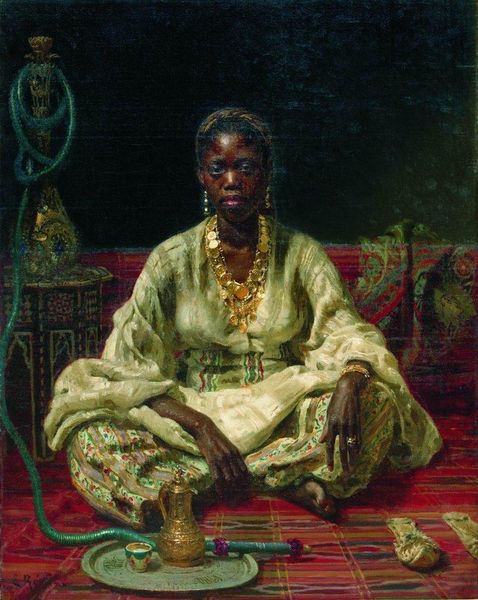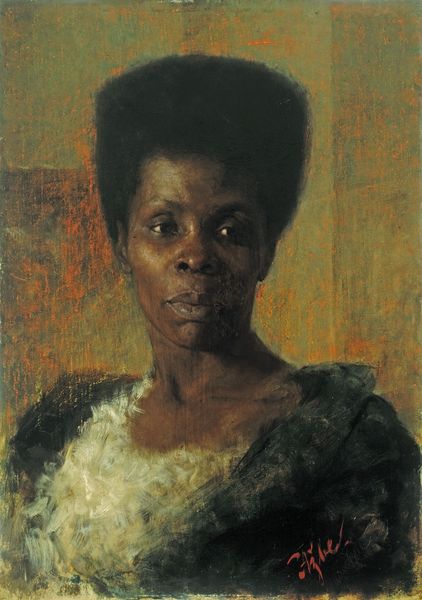
Copyright: Public domain
Konstantin Makovsky’s painting presents a man adorned in a vibrant turban, a headdress deeply symbolic across cultures. The turban, historically, signifies more than mere attire. It embodies identity, status, and religious affiliation. In various Eastern societies, it’s a marker of honor and respect. Its presence evokes a rich tapestry of traditions. Consider its counterparts in Renaissance paintings, where elaborate headwear also signified rank and cultural identity, an echo of power and distinction. The turban's enduring presence in art invites us to consider how cultural symbols migrate and transform. Like the flowing drapery in classical sculpture, which reappears in Baroque paintings with heightened drama, the turban, too, evolves, adapting to new contexts while retaining echoes of its past significance. It appeals to our collective memory, stirring subconscious associations. The emotional weight of such symbols lies in their capacity to resonate across centuries, engaging viewers in a silent dialogue between past and present, and revealing the cyclical nature of cultural expression.
Comments
No comments
Be the first to comment and join the conversation on the ultimate creative platform.
